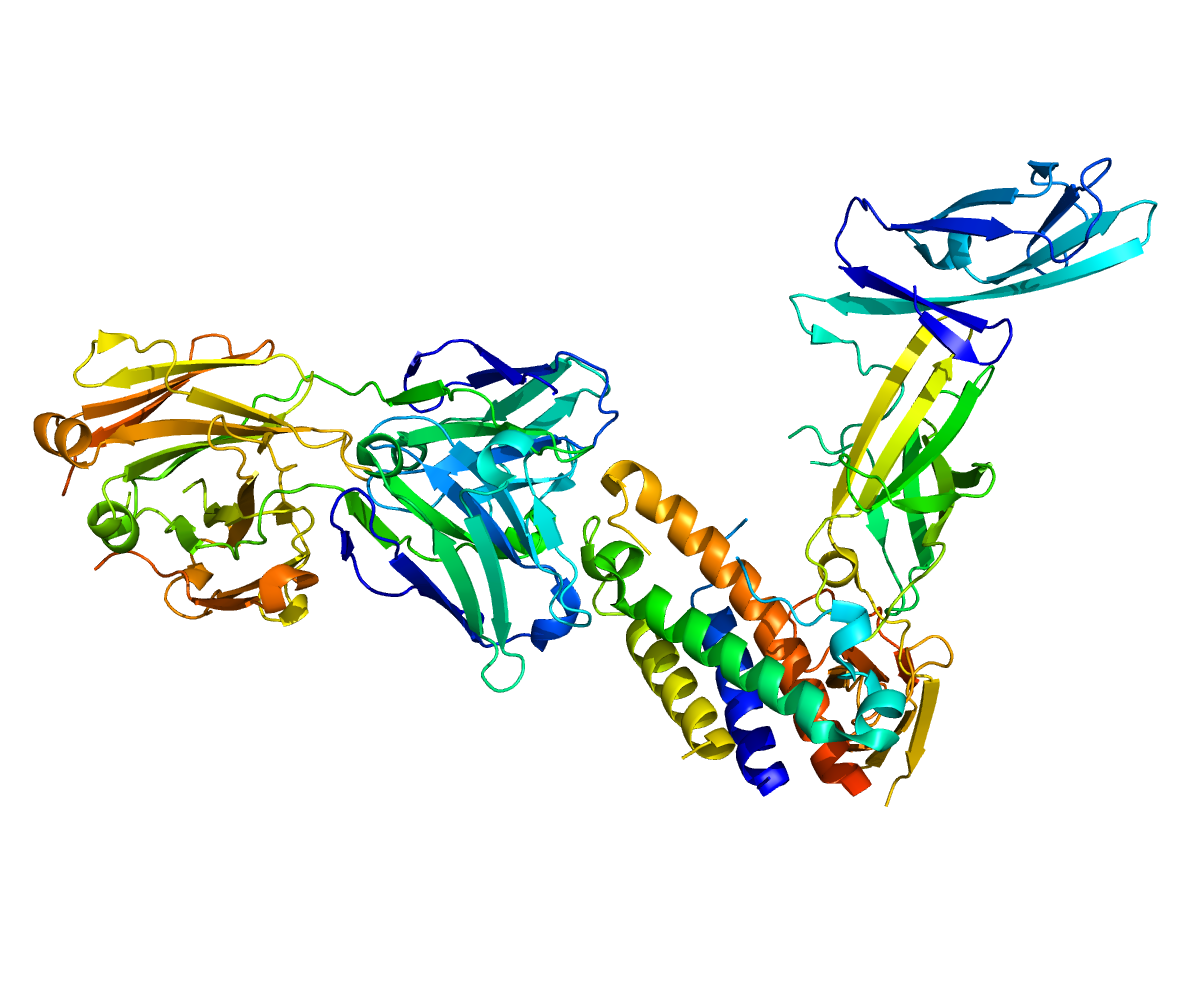Interleukin 23
Interleukin 23 (IL-23) is a S-S linked heterodimeric cytokine composed of the p40 subunit of IL-12 and an IL-23 specific subunit called IL-23 alpha subunit (p19). IL-23 belongs to the IL-12 family of cytokines which also includes IL-27 and IL-35. Like IL-12, IL-23 is produced primarily by dendritic cells and macrophages.
The receptor of IL-23 is formed by the beta 1 subunit of IL-12 (IL-12Rβ1) and an IL-23 specific subunit IL-23R. Both IL-12 and IL-23 can activate the transcription activator STAT4 and in conjunction with IL-6 and TGF-β, IL-23 stimulates naive CD4+ T cells to differentiate into a subset of cells called T helper 17 (Th17) cells. These cells produce IL-17, a proinflammatory cytokine that enhances T cell priming and stimulates the production of proinflammatory cytokines such as IL-1, IL-6, TNF-α and chemokines.
Figure This is a structure of IL-23A created using the data from Protein Data Bank (PDB: 3D85) and rendered using PyMOL.
In addition, IL-23 up regulates the expression of matrix metalloprotease MMP9, increases angiogenesis, reduces CD8+ T cell infiltration and promotes the survival and/or proliferation pathogenic IL-17-producing CD4+ effector T cells. Because of these activities, IL-23 is an important part of the inflammatory response. Although IL-23 is not required for the early development of IL-17 producing effector cells, it is strictly necessary for the maintenance and pathogenicity of IL-17 secreting cells.